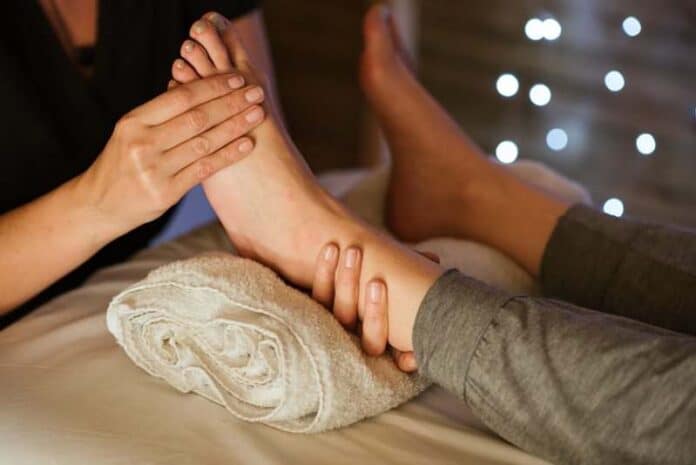You can find relief for your feet by wearing these foot compression socks. Foot pressure is relieved and blood circulation improved, which helps with relief from plantar fasciitis, heel spurs, and poor blood flow due to high heels and tight shoes.
What is the Knee Compression Sock?
The knee compression sock is a type of sock that is designed to help relieve pain and inflammation in the knee. The socks are made from a stretchy material that wraps around the knee and provides compression, which helps to reduce swelling and pain.
How do they work? The compression sock applies pressure to the kneecap, which helps to reduce pain and inflammation. The socks are also designed to keep the knee warm, so they can be worn during cold weather conditions.
What are the benefits of using a knee compression sock? The socks are effective at relieving pain and inflammation in the knee. They can also keep the knee warm, which can help to reduce discomfort. Finally, the socks are affordable, making them a good option for people who need relief from knee pain.
Benefits of wearing compression socks
The benefits of wearing pain relief foot compression socks are numerous. Here are just a few: –
- They reduce inflammation and pain.
- They improve circulation.
- They can help to reduce swelling.
- They can improve your sleep quality.
When Should You Wear Compression Socks?
There is no one-size-fits-all answer to this question, as the best time to wear compression socks depends on the individual’s pain level and activity level. However, general recommendations suggest that compression socks should be worn during periods of increased pain or activity. For example, experts advise against wearing compression socks during the day if the individual’s pain is mild, as daytime activities will likely cause discomfort. Conversely, compression socks may be recommended for individuals with moderate to severe pain who are engaged in high-intensity activities such as running or climbing.
If you are unsure when to wear compression socks, it is generally advisable to consult a doctor or physiotherapist. In addition, many brands of compression socks now come with instructions specifically for use in the workplace or during exercise.
Some examples of these instructions include specifying how long to wear the socks and how often to replace them. Some potential benefits of using compression socks include reduced inflammation and swelling, improved circulation, faster healing times, and relief from chronic pain. However, there are also some potential risks associated with wearing compression socks. For example, excessive use of compression socks can lead to tissue damage and even foot ulcers.
How To Choose The Best Pain Relief Foot Compression Socks For Your Needs
If you are looking for a way to relieve pain in your feet or ankles, compression socks may be the answer. There are a few things to consider when selecting compression socks, including the type of compression and the sock’s fit. Here are some tips on how to choose the best pain relief foot compression socks for your needs.
Types of Compression
There are three types of compression: graduated compression, static compression, and dynamic compression. Graduated compression socks use various levels of pressure to help relieve pain and swelling. Static compression socks use pressure to keep blood from pooling in your feet and ankles. Dynamic compression socks use movement similar to jogging or walking to provide greater relief.
Comfort is important when selecting foot compression socks, but fit also plays a role in their effectiveness. Socks should fit snugly but not be tight enough to restrict blood flow or cause discomfort. Try on several pairs until you find ones that feel comfortable and provide adequate compression.
Foot compression socks can be worn as needed, depending on the severity of your pain. However, it is important to remember that wearing them too frequently can actually cause more pain since they can irritate your.

